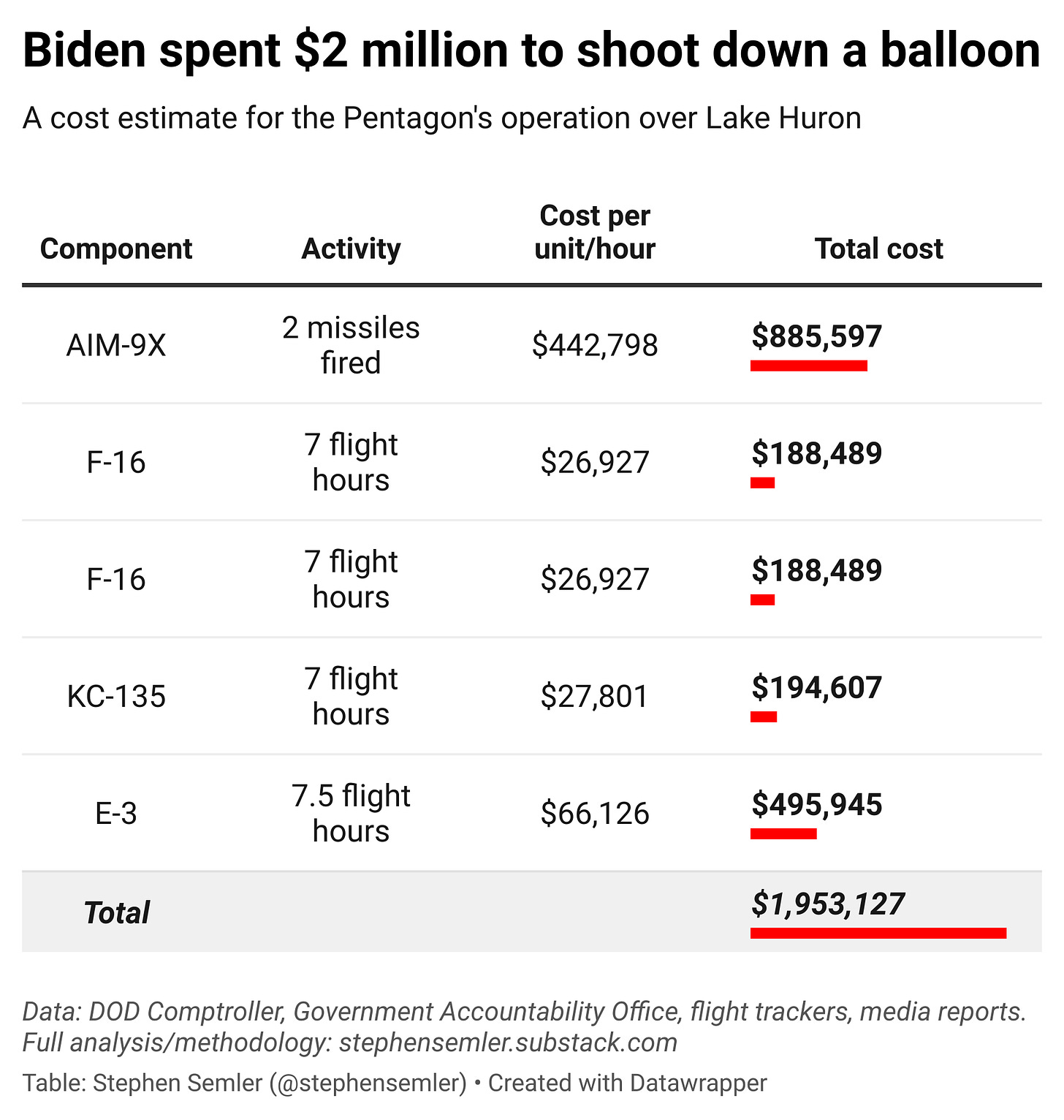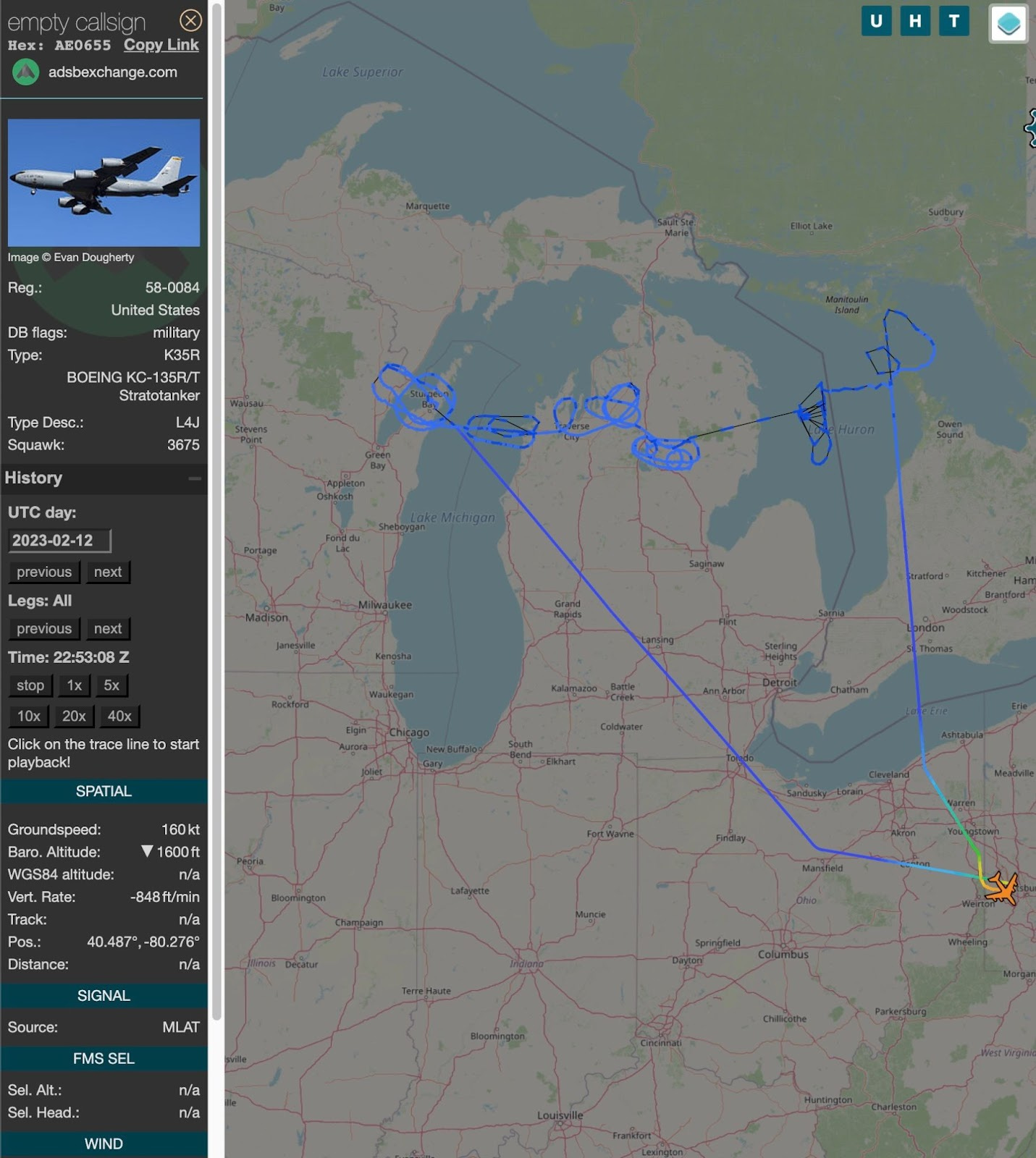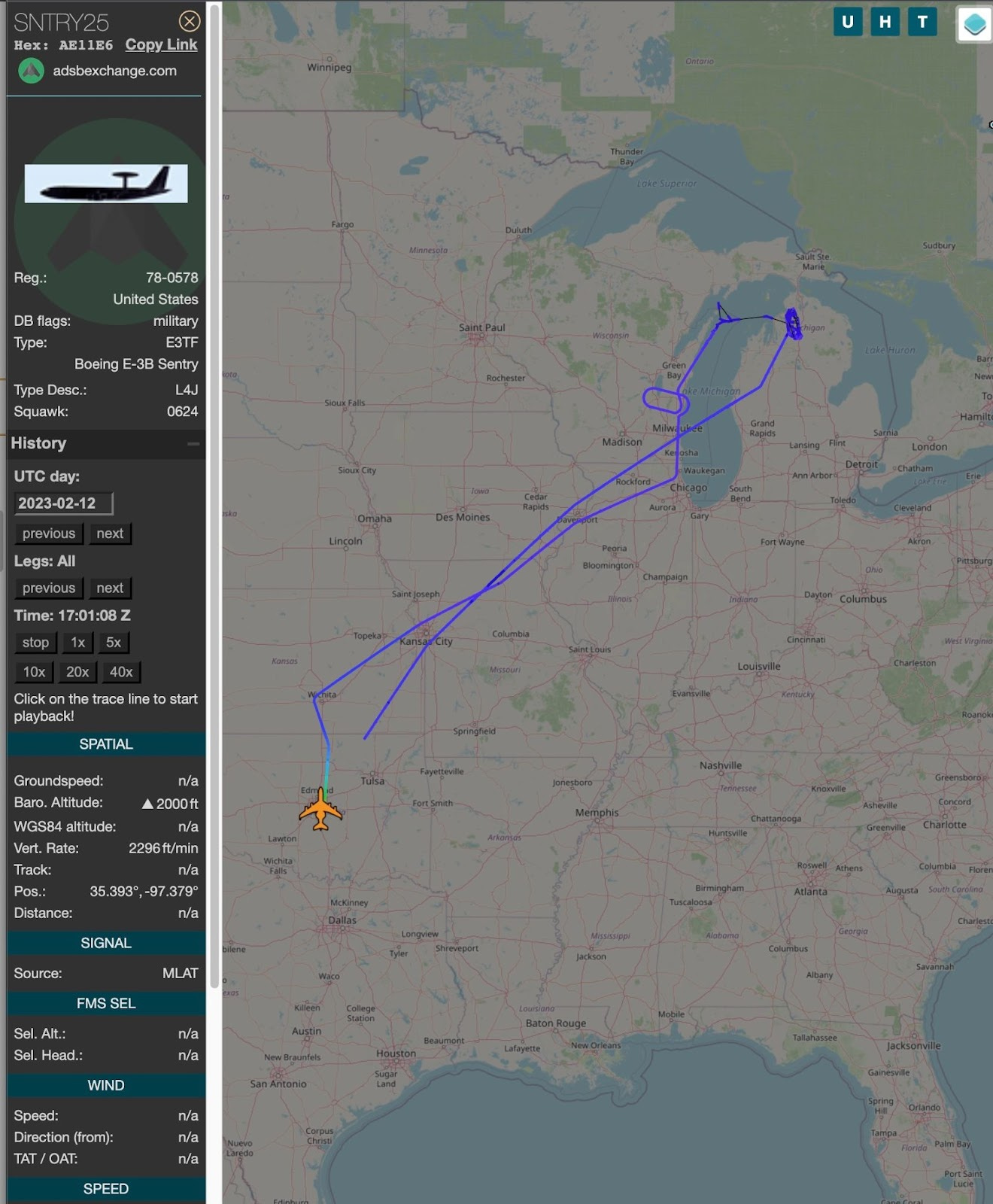
Aviation Week: https://aviationweek.com/defense-space/aircraft-propulsion/hobby-clubs-missing-balloon-feared-shot-down-usaf
**********
A small, globe-trotting balloon declared “missing in action” by an Illinois-based hobbyist club on Feb. 15 has emerged as a candidate to explain one of the three mystery objects shot down by four heat-seeking missiles launched by U.S. Air Force fighters since Feb. 10.
The club—the Northern Illinois Bottlecap Balloon Brigade (NIBBB)—is not pointing fingers yet.
But the circumstantial evidence is at least intriguing. The club’s silver-coated, party-style, “pico balloon” reported its last position on Feb. 10 at 38,910 ft. off the west coast of Alaska, and a popular forecasting tool—the HYSPLIT model provided by the National Oceanic and Atmospheric Administration (NOAA)—projected the cylindrically shaped object would be floating high over the central part of the Yukon Territory on Feb. 11. That is the same day a Lockheed Martin F-22 shot down an unidentified object of a similar description and altitude in the same general area.
There are suspicions among other prominent members of the small, pico-ballooning enthusiasts’ community, which combines ham radio and high-altitude ballooning into a single, relatively affordable hobby.
“I tried contacting our military and the FBI—and just got the runaround—to try to enlighten them on what a lot of these things probably are. And they’re going to look not too intelligent to be shooting them down,” says Ron Meadows, the founder of Scientific Balloon Solutions (SBS), a Silicon Valley company that makes purpose-built pico balloons for hobbyists, educators and scientists.
The descriptions of all three unidentified objects shot down Feb. 10-12 match the shapes, altitudes and payloads of the small pico balloons, which can usually be purchased for $12-180 each, depending on the type.
“I’m guessing probably they were pico balloons,” said Tom Medlin, a retired FedEx engineer and co-host of the Amateur Radio Roundtable show. Medlin has three pico balloons in flight in the Northern and Southern hemispheres.
Aviation Week contacted a host of government agencies, including the FBI, North American Aerospace Defense Command (NORAD), the National Security Council (NSC) and the Office of the Secretary of Defense for comment about the possibility of pico balloons. The NSC did not respond to repeated requests. The FBI and OSD did not acknowledge that harmless pico balloons are being considered as possible identities for the mystery objects shot down by the Air Force.
“I have no update for you from NORAD on these objects,” a NORAD spokesman says.
On Feb. 15, NSC spokesman John Kirby told reporters all three objects “could just be balloons tied to some commercial or benign purpose,” but he did not mention the possibility of pico balloons.
Launching high-altitude, circumnavigational pico balloons has emerged only within the past decade. Meadows and his son Lee discovered it was possible to calculate the amount of helium gas necessary to make a common latex balloon neutrally buoyant at altitudes above 43,000 ft. The balloons carry an 11-gram tracker on a tether, along with HF and VHF/UHF antennas to update their positions to ham radio receivers around the world. At any given moment, several dozen such balloons are aloft, with some circling the globe several times before they malfunction or fail for other reasons. The launch teams seldom recover their balloons.
The balloons can come in several forms. Some enthusiasts still use common, Mylar party balloons, with a set of published calculations to determine the amount of gas to inject. But the round-shaped Mylar balloons often are unable to ascend higher than 20,000-30,000 ft., so some pico balloonists have upgraded to different materials.
Medlin says he uses a foil balloon sold by Japanese company Yokohama for $12. The material has proven to be resilient for long periods at high altitude, he says, even if the manufacturer never intended the balloon to be used for that purpose. An alternative is Meadows’ SBS, which makes a series of balloons designed specially for circumnavigational flights.
The pico-ballooning community is nervous about the negative attention by some members of Congress and the White House, who have called the objects shot down at altitudes of 20,000-40,000 ft. dangerous to civil aviation.
“We did assess that their altitudes were considerably lower than the Chinese high-altitude balloon and did pose a threat to civilian commercial air traffic,” Kirby says. “And while we have no specific reason to suspect that they were conducting surveillance of any kind, we couldn’t rule that out.”
In fact, the pico balloons weigh less than 6 lb. and therefore are exempt from most FAA airspace restrictions, Meadows and Medlin said. Three countries—North Korea, Yemen and the UK—restrict transmissions from balloons in their airspace, so the community has integrated geofencing software into the tracking devices. The balloons still overfly the countries, but do not transmit their positions over their airspace.
The community is also nervous that their balloons could be shot down next. Medlin says one of his balloons—call sign W5KUB-112—is projected by HYSPLIT to enter U.S. airspace on Feb. 17. It already circumnavigated the globe several times, but its trajectory last carried the object over China before it will enter either Mexican or U.S. airspace.
“I hope,” Medlin said, “that in the next few days when that happens we’re not real trigger-happy and start shooting down everything.”
What Is a Pico Balloon?
Pico balloons are typically about 3 ft. in diameter on the ground before they are launched. As they ascend to altitudes of 20,000-50,000 ft., the super-pressure balloon envelope expands by about 2-3 times in size and achieves neutral buoyancy, allowing them to float at a roughly consistent altitude. Wind currents then push them through the atmosphere, with some balloons capable of circling the world several times before they pop or fall.
The balloon owners keep track of them through HF and VHF/UHF radio links. A small GPS tracking device is attached to the balloon by a tether. The balloon broadcasts its position using the WSPR protocol on HF and the ASPR standard for line-of-sight on VHF/UHF. Most pico balloons lack the lifting power to carry batteries, so the tracking coordinates usually are broadcast in daylight hours, with tiny attached solar arrays sending power to the transmitter.
**********
So, what does it cost to take-down one of Northern Illinois Bottlecap Balloon Brigade (NIBBB) balloons?
Well, here’s Stephen Semler of “Speaking Security” with the tally https://stephensemler.substack.com/p/how-much-does-it-cost-to-shoot-down
**********
How much does it cost to shoot down a balloon?
Speaking Security Newsletter | Note n°195 | 17 February 2023
Findings
Citing intelligence community reports, Joe Biden said the three things shot down during the last week or so were “most likely balloons.” So how much did it cost to destroy these objects that may only be $12-180 each? As a case study, I considered the Pentagon’s operation over Lake Huron on February 12. According to my analysis of government documents, flight tracking data, and media reports, I estimate that it cost $1,953,127 to shoot down what was “most likely” a balloon. Methodology section is below, and feedback is welcome on this preliminary (and very conservative) estimate.

^Alt text for screen readers: Biden spent $2 million to shoot down a balloon: A cost estimate for the Pentagon’s operation over Lake Huron. This table has four columns: the component used in the Lake Huron operation, the activity it performed, the cost per unit or hour, and the total cost. I’ll go down the chart row by row: AIM-9X, 2 missiles fired, $442,798 per unit, $885,597 total cost. There are two rows for the F-16 showing these data: 7 flight hours, $26,927 per flight hour, $188,489 total cost. KC-135, 7 flight hours, $27,801 per hour, $194,607 total. E-3, 7.5 hours, $66,126 per hour, $495,945 total. All told, $1,953,127 in total. Data via DOD Comptroller, Government Accountability Office, flight trackers, media reports.
Methodology
To calculate the unit cost of the AIM-9x missiles, I looked at the Air Force’s FY2022 procurement figures from the DOD Comptroller and divided the total purchase value by the quantity of missiles purchased. I referred to the Government Accountability Office for the cost per flying hour for each aircraft. To get the number and type of missiles and aircraft involved in the operation, I relied on media reports and statements from DOD officials. To calculate flight times, I used media reports to ascertain the takeoff and landing times for the F-16s, but I analyzed flight tracking data to get the takeoff and landing times for the support aircraft, the KC-135 and E-3.


**********
And, of course, with all the Progressive saber-rattling coming out of the Zhou Regime, once again, we reprise our song of the week.